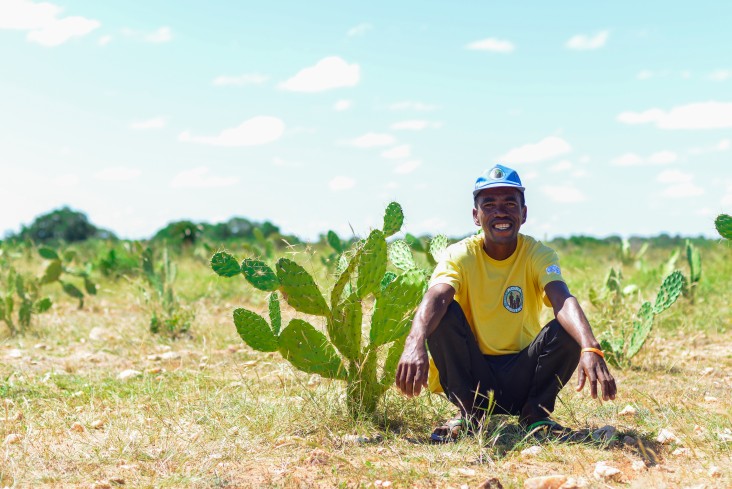Speeches Shim

Villagers in Southern Madagascar Grow Edible Cacti to Sustain Their Livestock through Drought
Cacti grow in the wild in much of southern Madagascar, blanketing the flatlands like giant weeds, their spiny stalks protruding menacingly.
In the village of Belamboa Bas, however, cacti are not a threat, but a life-line. Edible varieties hand-planted in tidy rows just outside of town are the answer to a problem that has plagued the community for decades.
“ASOTRY came to our community to set up a Disaster Risk Reduction (DRR) committee and develop a plan to mitigate the disaster’s impact,” said Albert Tanandraza, one of the ten DRR committee leaders. “We chose to plant cactus trees, because this is a drought-prone area. When the dry season comes, our cattle have no food to eat. They get sick and they die.”
The 38-year-old father of five knows this all too well. In the lean years of 2011 and 2013, he lost 20 cows during especially hard lean seasons.
“I felt sad and helpless when they died,” he said. “When ASOTRY came, we gathered the community and asked them: ‘What do you think we need in this village?’ We all agreed that we needed to plant the cactus trees, because that was what our cattle needed the most.”
Belamboa Bas is like all the villages in the area: cacti grow almost anywhere, taking hold in the most unlikely places. But the most common variety of cacti is not edible for cattle or humans. So, the entire community came together and for one month planted 2,000 edible cactus seeds over an area of 4 hectares. The tenacious plant took root in the dry soil and, within one year, was already towering over the villagers.
The lean season runs from July to December, but now the community has a surplus of cattle fodder growing just out of town, easily available. Farmers may take a wagon, hack off some stalks and branches, sear the large spiky leaves over a hot flame to remove the dangerous thorns, and feed the cattle with the fresh green produce.
“Earlier, our cattle didn’t have any food to eat during the lean season, and ultimately they would die,” said Albert, whom his peers unanimously identified as the most hardworking member of the DRR committee . “Now, we have enough cacti to feed the cattle during the drought period. Our animals no longer die of starvation.”
“I am happy because my community has managed to find the solution by itself.”
ASOTRY, with the support of USAID, has trained 3,832 Disaster Risk Reduction members in 379 communities, helping them to get ready for drought, cyclones, floods, and fires.

Comment
Make a general inquiry or suggest an improvement.